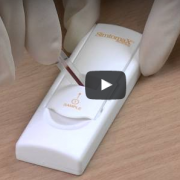Spread Awareness! Keep this Celiac Disease Checklist Handy!
 A diagnosis rate of less than 15% warrants a reminder of the symptoms, paths to diagnosis and treatment of celiac disease.
A diagnosis rate of less than 15% warrants a reminder of the symptoms, paths to diagnosis and treatment of celiac disease.
- Dr. Rakshith Bharadwaj, MD Internal Medicine, msn.com 1
Overview
Celiac disease a chronic immune disorder triggered by gluten ingestion that results in damage of the intestinal lining and causes diarrhea, fatigue, weight loss, bloating and anemia.
Symptoms
If you’re experiencing new, severe, or persistent symptoms, contact a health care provider.
The signs and symptoms may vary between children and adults. Mild cases may not show any symptoms.
Some of the common typical signs and symptoms of celiac disease include –
- Vomiting
- Poor appetite
- Bloating
- Flatulence
- Abdominal pain
- Diarrhea
- Constipation
- Weight loss
- Irritability
- Short stature
- Changes in mood such as anxiety
- Tingling numbness in the hands and feet
- Seizures
- Irregular periods, infertility or recurrent miscarriage
- Canker sores inside The mouth
- Thinning hair and dull skin
Many adults have symptoms unrelated to the digestive system:
- Anemia
- Osteoporosis (or) osteomalacia
- Blisters and skin rashes that itch
- Damage to the dental enamel
- Ulcers in the mouth
- Fatigue
- Damage to the nervous system
- Ache in the joints and in the head
- Reduced functioning of the spleen (hyposplenism)
- Acid reflux and heartburn
Causes
- Celiac disease is an autoimmune disorder where the body shows an extreme reaction to foods containing gluten.
- The exact cause is not known. Both genetic and environmental factors play role.
- Genetic testing shows that almost all people (95%) with celiac disease have HLA-DQ2 or HLA-DQ8 variants of human leukocyte antigens.
- It is sometimes triggered after pregnancy, childbirth, surgery, or viral infection.
The risk factors include:
- Family history of Celiac disease
- Down syndrome or Turner syndrome
- Type 1 Diabetes
- Autoimmune thyroid disease
- Addison’s disease
Celiac disease is diagnosed by laboratory testing.
- Blood test – elevated levels of celiac disease antibody in the blood indicates celiac disease.
- Genetic test – genetic testing for Human Leucocyte antigen (HLA) to check for HLA-DQ2 or HLA-DQ8.
- Biopsy – a sample of the inner lining of the small intestine is analyzed.
Treatments
- The only way to manage this condition is to follow a strict gluten free diet.
Complications associated with celiac disease
- Lactose intolerance: once the intestinal lining is damaged, eating dairy products can also cause problems like abdominal pain, diarrhea, etc.
- Malnutrition: As the villi are damaged, nutrients cannot be absorbed and this leads to malnutrition & weight loss
- Cancer: People with celiac disease who do not maintain gluten free diet are at high risk of developing cancer
- Neurological problems: Seizures or peripheral neuropathy is observed in some people
- Loss of calcium and bone density: Loss of calcium absorption can lead to bone damage
- Infertility & miscarriage













